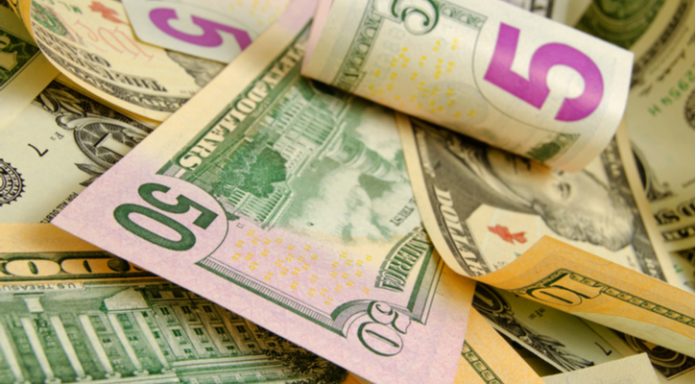The pound charged higher versus the euro on Tuesday, thanks to stronger UK data and disappointing eurozone numbers. The pound rallied to €1.1462 versus the euro, it highest level in almost a week.
| What do these figures mean? |
|---|
|
When measuring the value of a pair of currencies, one set equals 1 unit and the other shows the current equivalent. As the market moves, the amount will vary from minute to minute. For example, it could be written: 1 GBP = 1.13990 EUR Here, £1 is equivalent to approximately €1.14. This specifically measures the pound’s worth against the euro. If the euro amount increases in this pairing, it’s positive for the pound. Or, if you were looking at it the other way around: 1 EUR = 0.87271 GBP In this example, €1 is equivalent to approximately £0.87. This measures the euro’s worth versus the British pound. If the sterling number gets larger, it’s good news for the euro. |
News that UK manufacturing sector activity has risen slightly in March lifted the pound in the previous session. UK manufacturing activity ticked higher from 55 to 55.1 in March, beating analysts’ forecasts of 54.7.
This data points to the continued strong expansion of the UK manufacturing sector, which has been one of the best performing sectors in the UK economy. Strong growth in Europe in addition to a weaker pound have supported the sector over recent quarters. The pound rallied on the stronger data, ignoring the weaker orders segment of the report which suggests a soft patch in manufacturing could be coming up.
| Why does strong economic data boost a country’s currency? |
|---|
| Solid economic indicators point to a strong economy. Strong economies have strong currencies because institutions look to invest in countries where growth prospects are high. These institutions require local currency to invest in the country, thus increasing demand and pushing up the money’s worth. So, when a country or region has good economic news, the value of the currency tends to rise. |
Today investors will now focus on the construction pmi and the service pmi due today and Thursday respectively. These figures, particularly the ones from the dominant UK economy service sector have the potential to drive investors expectations to an interest rate hike in May when it meets for the next monetary policy meeting. A strong reading from these releases could help boost optimism for a rate hike and therefore send the pound higher.
| Why do raised interest rates boost a currency’s value? |
|---|
| Interest rates are key to understanding exchange rate movements. Those who have large sums of money to invest want the highest return on their investments. Higher interest rate environments tend to offer higher yields. So, if the interest rate or at least the interest rate expectation of a country is relatively higher compared to another, then it attracts more foreign capital investment. Large corporations and investors need local currency to invest. More local currency used then boosts the demand of that currency, pushing the value higher. |
Euro Tumbles On Growth Slowdown Fears
The euro was firmly out of favour in the previous session following a disappointing eurozone manufacturing pmi. The data showed that manufacturing levels had fallen in Germany and Italy, whilst retail sales in Germany were also just half of what analysts had pencilled in. The indiscriminate weaker data fuelled fears that growth momentum was slowing in the eurozone, which sent the euro sharply lower.
Today investors will be focusing strongly on eurozone inflation data. Sluggish inflation in the eurozone remains a problem for the European Central Bank (ECB). The ECB and particularly ECB President Mario Draghi, often cites inflation as the reason for not tightening monetary policy. Analysts are expecting inflation in the bloc to have increased sin March to 1.4%, up from 1.2% in February. Meanwhile core inflation which strips out more volatile items such as food and fuel, is forecast to have increased to 1.1%, up from 1%. Whilst these numbers are still a long way from the ECB’s 2% target, a strong reading could lift the battered euro.
|
This article was initially published on TransferWise.com from the same author. The content at Currency Live is the sole opinion of the authors and in no way reflects the views of TransferWise Inc. |





